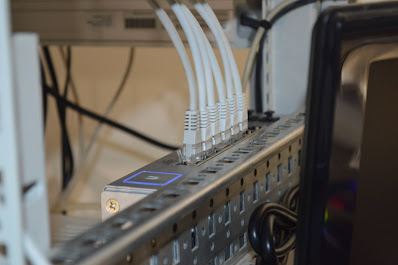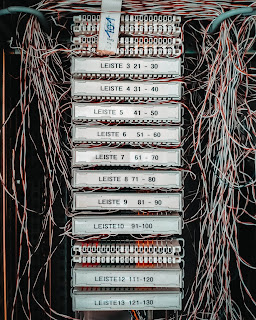Today we will learn about the popular Open System Interconnection Model for interconnection. It is a hypothetical model to visualize the network
interconnection. This model is divided into seven layers.
Host layers are further subdivided into four types :
These seven network
layers are classified into two types namely Media Layers and Host Layers.
Media Layers further subdivided into three types :
- Physical Layer (This layer is responsible for bit streams transmissions over the physical medium)
- Data link layer (Transfer of data frames takes place)
- Network Layer (this layer used for routing and traffic operations)
Host layers are further subdivided into four types :
- Transport Layer (data fragmentation takes place)
- Session Layer (Manages the session for uninterrupted connection)
- Presentation Layer (translation of data between network service and an application happens)
- Application Layer (layer in which resources and file sharing takes place).
Now, let us look about all of these layers in brief and try to
understand their functioning.
Physical Layer
This Layer is responsible for the transmitting and receiving
data between device and physical transmission medium (i.e. wires, optical fiber
cables, etc.). Conversion of bits (binary digits) into electrical, optical and
radio signals takes place here. This layers correspond to the connection with
physical devices directly like resistances, Bluetooth, Ethernet, USB, etc.
Data Link Layer
Data link layer is responsible for node-to-node transfer of
data.it also correct the error of data packet losses and repair the packets.
According to IEEE standard this layer is classified into further two parts MAC
(Medium access control) and LLC (Logical Layer control). P2P (peer to peer)
data linking takes place in this layer. Encryption can be applied to this
layer.
Network Layer
This layer is the medium for transferring the packets of data
from different nodes with different networks. Data fragmentation also takes
place by breaking data into small fragments and transfer them independently
from several nodes and it also reassembles those data fragments back again at
the destination node.
Transport layer
Transport layer takes care of reliability of packets retrieved
from the previous layer and verifies the data if the data packet is good and
error-free then it acknowledges the successful transfer.
There are classes defined in the layer according to the packet reliability.
In the previous blog, studied about the SSL/ TLS Encryption, which is
associated to this layer. TLS (Transport Layer Security) provides the security
to the Transport Layer by verifying the reliability.
Session Layer
It is responsible for the graceful session handling. This layer manages
the session categorization and control of session. It can terminate, and start
a session which is handled over TCP (Transmission Control Protocol) and this
layer is implemented explicitly in Desktop Environment using the RPCs (Remote
Procedure calls).
Presentation Layer
It translates the data between application and network in that
form that application require and also provide the independence from data
representation. It is also known as syntax layer because semantics are being
taken care by this layer. Data compression takes place in this layer.
Application Layer
This is the OSI layer, where direct interaction of user and
software applications take place. Interaction with applications that fall
outside the scope of OSI model. It determines identity and availability of
communication partner where data needs to be transmitted. Application layer
does not deal with the resource availability as host may be free to use the
different resources for example a website can be hosted using the http resource
and https as well both independently.
However, there are nowadays other new models been developed like
TCP/IP (Transmission control protocol/ Internet Protocol) model to understand
the computer networking and they are being used too but most of the
institutions uses this basic OSI model in their regular classes.
Reference : Wikipedia.org
We hope that you like our content..Any comments or feedback are always welcome..It helps us to improve more.







1 Comments
Nice content..Loving it..
ReplyDeleteIf you have any doubts, please let me know.